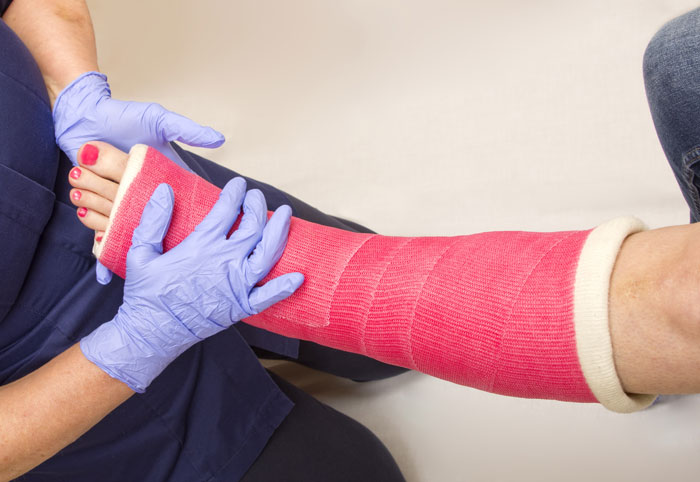Common Questions on Casts and Splints
March 2019
I have a splint or cast. What do I need to know about it?
by Drs. Lamblin and Francisco and staff
The splint or cast will help to hold your bone in proper alignment for the fracture to heal. While casts and splints offer protection from the outside environment, they do not function as “body armor”. You still need to use common sense and follow your doctor’s instructions to protect the extremity from outside injury.
KEEP IT DRY, CLEAN, AND INTACT
It is most important to keep the splint clean and dry. Don’t pull on the exposed padding, as this is intended to protect your skin from rough edges on the cast or splint. Cover the splint with a plastic bag for bathing and even when covered, don’t attempt to submerge the cast or splint. If it becomes slightly damp, you may attempt to dry it out with a hair dryer on low heat. However, if the splint or cast is saturated or you are having significantly increased odor or skin irritation, you need to schedule an appointment to have the cast or splint changed or seek evaluation at an urgent care center.

“IT ITCHES!”
Most patients experience intermittent itching under a cast or splint. In general, the best therapy for itching is distraction because the itchy sensation will subside on its own. Sometimes, it is helpful to scratch the same spot on the opposite limb. Do not stick any “scratching utensils” inside the cast or splint because items may break off, become stuck in the splint, or disrupt the inner padding, all of which can cause skin wounds under the cast itself.
THE FIT SHOULD BE SNUG, BUT NOT TIGHT
To be effective, a cast or splint must effectively immobilize the fractured bone in the proper position for the bones to heal. Therefore, the fit does need to be snug. However, it should not be so tight that your extremity below the cast or splint is turning blue, purple, feels numb or tingly or cold to the touch. Conversely, the fit should not be loose enough to allow your limb to be moving or sliding inside of the cast or splint. Sometimes, a cast or splint needs to be adjusted over time to accommodate changes in swelling levels or to fit to the extremity. Contact your physician’s office if you have concerns about your cast or splint fit and seek emergency care if you have any concerns about compromised circulation to your casted or splinted limb.

GUIDELINES FOR REMOVABLE SPLINTS
Some injuries can be effectively treated in splints that are removable. Your physician will specifically indicate if it is okay for you to briefly remove your splint for bathing. It is important that you only remove the splint if your physician has given you clearance to do so and for the specific activity or timeframe that they recommend. Your splint fit may be adjusted using the straps or dial mechanism according to the fit guidelines above. The splint fit should not be so loose that you are able to remove the splint without loosening the straps or dial. Parents need to supervise the adjustment of splint fits for children.


